When a sales order of one line is shipped, and the stock accounting interface run, the shipment journal entry and invoice have each 4 lines as shown below.
Sales order with 1 line

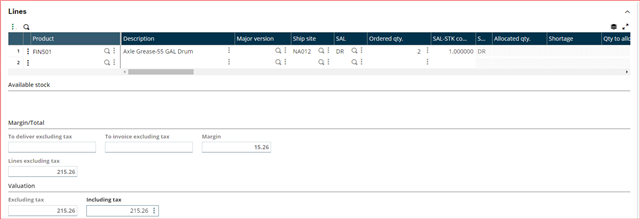
Shipment Journal Entry has 4 lines

The invoice also has 4 lines

Sales orders can often contain several hundred lines. After an order is shipped and validated, and the stock interface run, there will be more than 3 times the number of sales order lines in the shipment journal entry and invoice. This is inconvenient as well as having implications for system performance during posting.
If the invoices are created immediately, following posting the deliveries (recurring tasks are executed on the batch server one after another), there is no need for posting to SNI and revenue clearing accounts.
To avoid these bloated journals, use of “Invoices to be issued” process to accrue non invoiced shipment (exceptions) as part of the period close procedures.
To accomplish this, we ought to alter 3 automatic journals; the shipment (STKSD), the invoice (SIHI) and shipment return (STKRN) auto journals.
Determining the posting lines.
Before we can modify these auto journals, we need to identify the lines responsible for posting.
We first make copies of the relevant Automatic Journals as follows: STKSD -> XSTKD; SIHI->XSIHI and STKSR->XSTKR.
The "Free reference" field on the Formulas tab of the Automatic Journal lines can be used for identification of posted lines.

IIn this example, we use the "Description" field in the Formulas tab.
We use the database mass update function (GESAMI) to label the automatic journal lines on the description field, in the Formulas tab as the screen shot below.
The table GAUTACEF contains Automatic journal Formulas tab entries..

The Selections block: [F:GAG]COD = ‘XSIHI’ is the automatic journal code, [F:GAG]FLD = ‘DES’ the automatic journal description field and Update block: [F:GAG]LINNUM) is the Automatic Journal line number.
Save and validate the function GESAMI. Executing in Test mode, displays a log reading on what will be modified on the automatic journal Description filed.
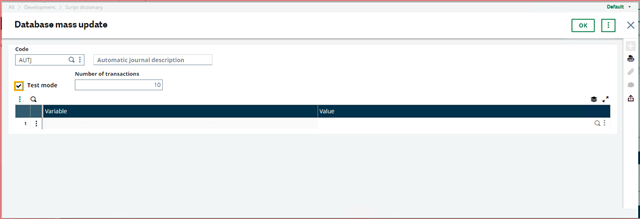
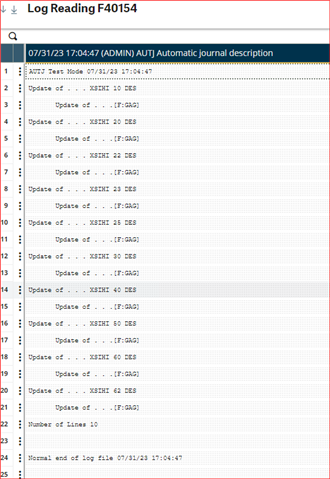
Running without Test mode,
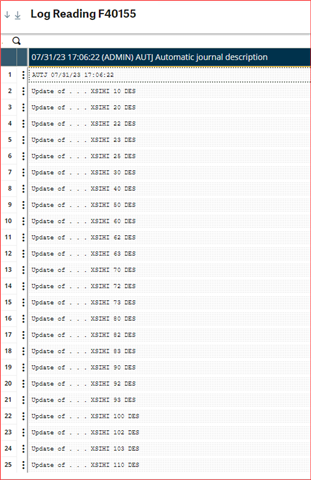
We do the same for XSTKD and XSTKR by replacing XSIHI on the Details block in the Database mass update function on the screen shot above.

and

The result for XSTKR lines is shown below.
Line 1

Line 2

Line 3

Line 4

Line 5

On the corresponding entry transactions for the delivery and shipment returns, the customized Automatic journals are entered in the ENTCOD field.
Delivery

Customer return
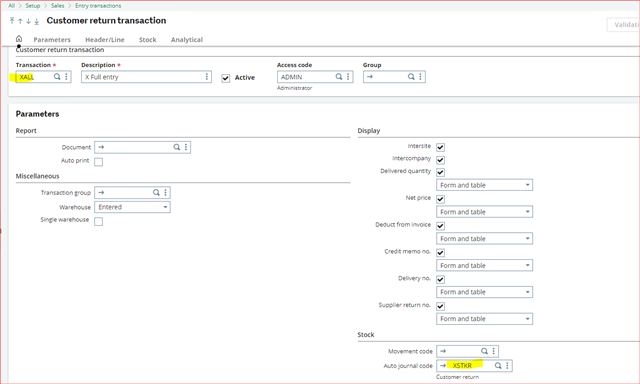
Invoice Type
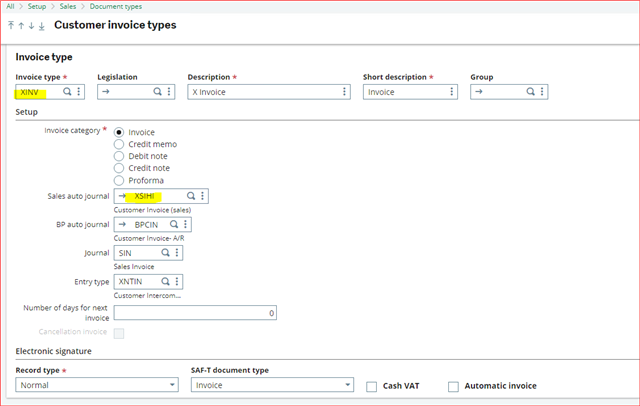
For the shipment journal entry, the trigered automatic journal lines are 1, 3, 4 and 5 as highlighted below. (Note that I used the Free reference field to label the automatic journal lines rether than the "Description" field in the Formulas tab )

Standard posting accrues a sales amount (credit) each time a product is shipped to a customer. When the customer is invoiced, the accrual is reversed when the sales invoice is posted and a credit posted to the regular sales account along with a debit to Accounts Receivable. The accrual and reversal that normally take place can be eliminated with the standard shipment and sales invoice posting logic since they should always net to zero.
– Posting of sales accrual for shipments is XSTKD (posts shipments to the GL). XSTKD will be modified to deactivate the lines involving posting to the accrual (Sales Deliveries Line 4 and 5)
– The reversal of the accrual is in the XSIHI (posts sales to the GL). SIHI will be modified to deactivate the lines invoicing posting the reversal (Sales Invoices and credits line 270, 280, 290, 300)
– XSTKR deals with customer returns. XSTKR will be modified to deactivate accruals (accruals and credit notes Line 4 and 5)
We disable an automatic journal line by putting a false condition ( 1=2 ) on the lines 4 and 5 as below, for the XSTKD auto journal.

For XSIHI we disable lines 270, 280, 290, 300.

Then set a general parameter SIVTYP to the invoice type XINV, that we created above. ( Setup > General Parameters > Parameter values. VEN Sales Chapter, Legislation USA, INV Invoice rules)
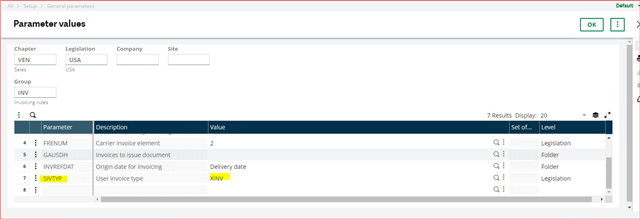
For XSTKR we disable line 4 and 5

To see the posting with our new automatic journals, we create transactions as follows.
We create a customer order using Sales > Orders > Orders
o ALL transaction entry screen
o Site NA012
o Order type SON
o Customer NA004
o Today’s date
o Shipment site NA012
o Product FIN501
o Quantity 2
o Create the order
Allocate to the order. Create the delivery.by selecting the XALL delivery entry transaction. Validate the delivery.
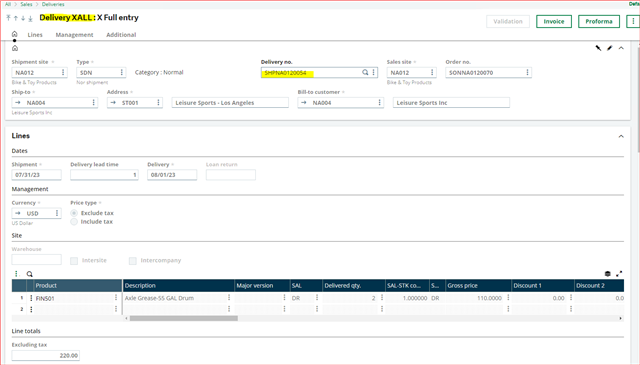
Run the stock accounting interface and view the journal entry. It has only 2 lines.

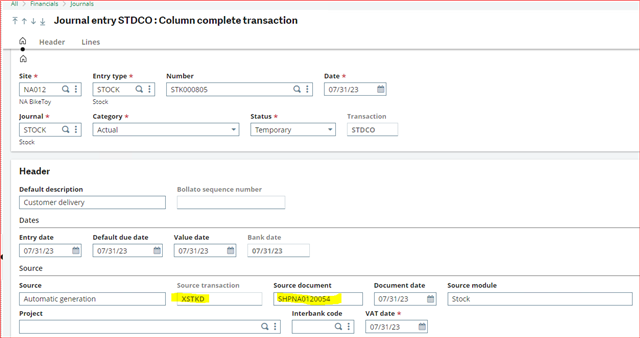

Before modification of STKSD, we had 4 lines as below.

Then invoice the delivery by selecting ALL invoice transaction and post.
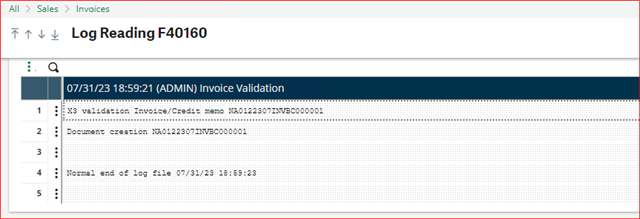


The journal entry is just 2 lines which is debiting the customer AR control account and crediting the sales revenue account.
I hope this is a helpful Automatic journal modification exercise that can be used in real life stock posting.

